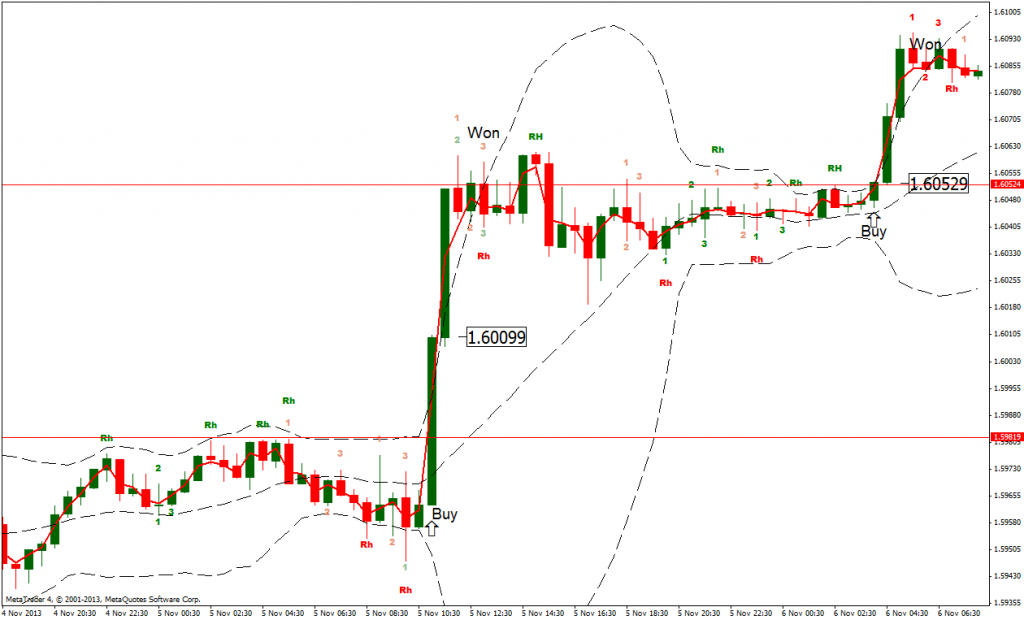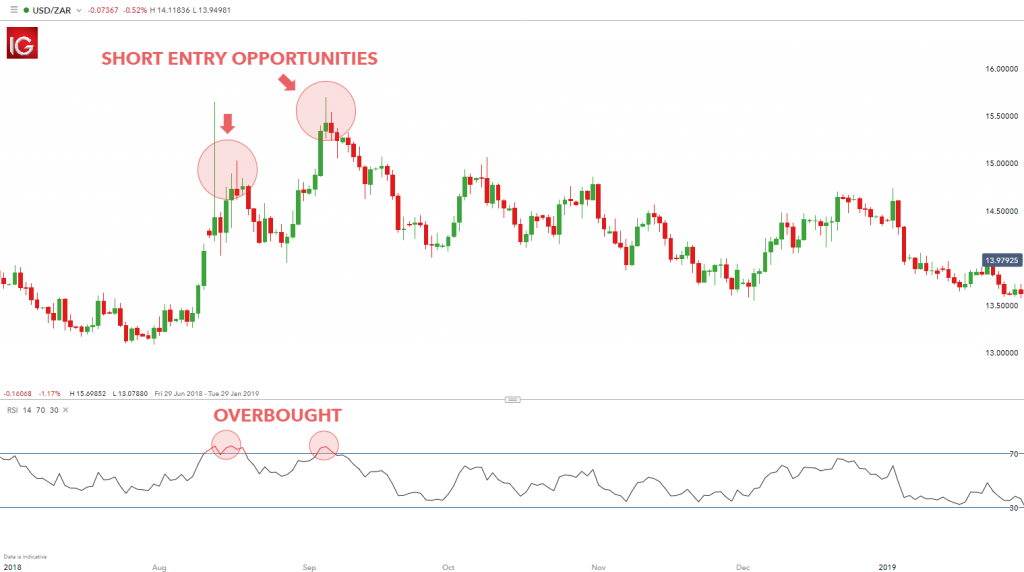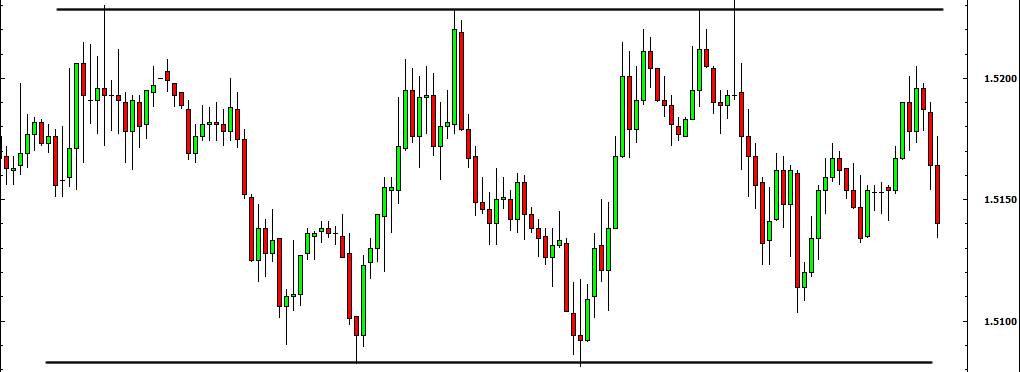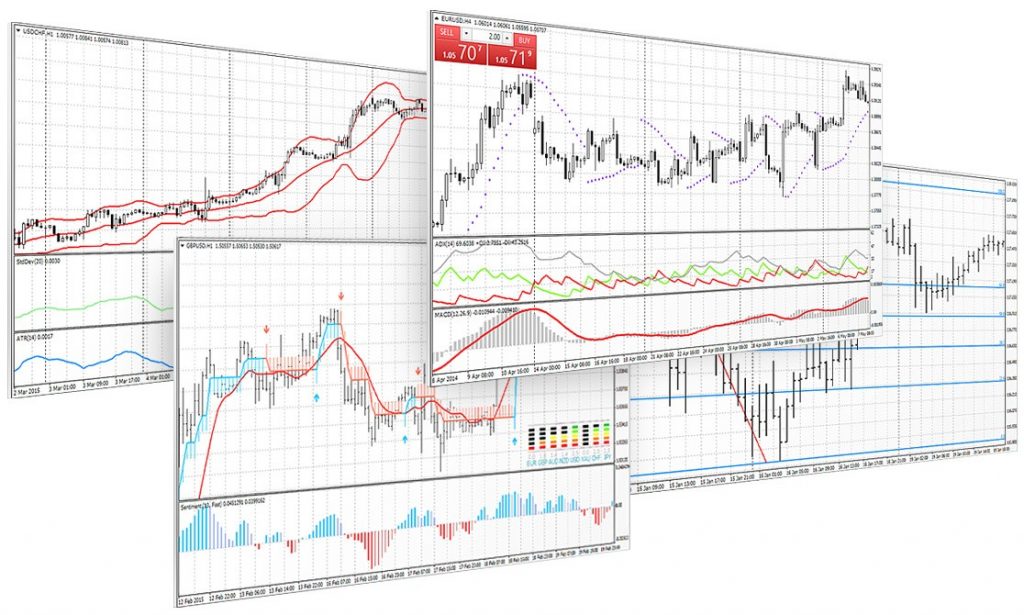Swing Trading Strategies
The best swing trading strategies can make the difference between profit and loss. Effective approaches tend to produce consistent returns, often using technical indicators, price patterns, online charts and risk management tools. You can generally apply top strategies to a range of instruments and assets, from forex, stocks and cryptocurrencies to futures and options contracts.
This beginner’s guide to swing trading strategies will walk through various systems that can be applied to popular financial markets. We also outline the fundamentals of developing your own strategy and finding the right broker to complement your approach.
Swing Trading Strategies Explained
Swing trading aims to exploit short- and medium-term price movements. Unlike day trading, where positions are closed before the markets end, swing trading involves holding positions overnight. As a result, timeframes range from days to weeks and even months.
Many popular instruments for swing trading display high levels of volatility, so implementing a robust strategy can be key to successfully predicting price movements and managing risk. Strategy development can also help make successes repeatable and mistakes avoidable.
There are several types of swing trading strategies, each more suitable to particular instruments, markets or price characteristics. Some traders and approaches prefer calmer, more stable markets, while others look to capitalise on rapid price swings.
Swing trading strategies often involve taking a long or short position on the stock market. Some traders also like to speculate on penny stocks, though this can be risky due to their volatility. Of course, swing trading strategies can also focus on commodities (including crude oil), forex pairs and cryptocurrencies, as well as instruments like futures and options. Some systems, particularly those that analyse market fundamentals, will be specific to individual markets but others can be applied more generally.
Key Components
The best swing trading strategies can be broken down into the following key areas:
- Risk Management: Even the most advanced speculators lose money on many of their trades. However, they can still turn an overall profit by appropriately managing risk. Swing trading strategies are designed so that the rewards from successful trades will outweigh potential losses, which can be limited by placing stop-loss orders, for example.
- Technical Analysis: Most swing trading strategies are based on technical, rather than fundamental analysis, which utilises a variety of charts and indicators to assess patterns. Common tools include Renko charts and Bollinger Bands, as well as the RSI, Momentum and ADX indicators.
- Entry/Exit Strategies: Timing exactly when to hit buy and sell is crucial. To avoid making decisions based on guesswork, successful investors use technical analysis to inform when they enter and exit the market. Above all, you need to be patient and level-headed, ensuring that you do not miss opportunities to increase their returns.
- Money Management: The final component of a powerful swing trading strategy is money management. By far the most common technique used to keep finances healthy is the ‘percentage method’, wherein you only invest a set percentage of your total capital (often 1% or 2%) at any time. This limits potential losses and ensures that they do not wipe out a slew of successes.
Top 5 Swing Trading Strategies
Bollinger Band Breakout Strategy
Bollinger Bands are a technical analysis tool that uses simple moving averages, which reflect the average price movement over a certain timeframe. The Bollinger Band consists of a pair of trendlines plotted two standard deviations from the moving average and can be used to indicate how overbought or oversold the market is. The closer the price moves to the upper bound, the more overbought the asset is and vice versa.
Price action is usually contained within the two bands. However, when it touches one of them, it indicates that a major market movement may be underway.
Many swing trading strategies incorporate Bollinger Bands, including the one outlined below, which is known as a breakout strategy. Advanced traders use Bollinger Bands in conjunction with other trading indicators, like the RSI and on-balance volume, to more accurately predict the direction of a breakout.
Bollinger bands are utilized used in shorter-term swing trading strategies. An example Bollinger Band swing trading strategy is outlined below:
- Wait for the price to touch the lower band, which indicates the market has been oversold.
- When the price breaks out through the centre band, go long. A strong bullish (green) candle should indicate that the market is about to reverse, which can be used as an entry indicator. This is known as the breakout candle.
- Set a sensible stop-loss level, usually just below the breakout candle. If the price moves past this point, the strategy may have incorrectly predicted the direction of the breakout.
- Exit the market using much of the same approach as before but in reverse. Wait for the price to touch the upper band before breaking out below the central band. This indicates that the market may be about to head in a bearish direction.

Bollinger Band Indicator
Moving Average Crossover
Using multiple moving averages in conjunction with each other is common in swing trading strategies. Traders often use two or more moving averages covering different timeframes. For example, the nine-day exponential moving average (EMA) and the 13-day EMA (the EMA weights recent trades more heavily than with an SMA).
When different averages cross over one another or the price, this can indicate future trends. For instance, when a short-term moving average crosses over a long-term moving average, this signals that more people are buying a particular instrument, potentially heralding an upwards movement in the market. Moving average crossovers can be applied to forex trading, stock markets, commodities trading and more.
Below, we have provided an easy moving average crossover strategy:
- Implement three EMA indicators, set at 9, 13 and 50-day timeframes.
- If the price crosses the 9-day and 13-day EMAs, an upwards trend may be about to begin.
- If the 9-day average then crosses the 13-day average, enter the market, provided the 50-day average sits below the 13-day average.
- Do not forget to set your take-profit and stop-loss levels appropriately.
- Exit the market when the indicators have reversed.
The Relative Strength Indicator
The RSI (relative strength indicator) is a momentum indicator that measures the magnitude of recent price changes. It is frequently used in swing trading strategies to indicate whether the market is overbought or oversold. The RSI moves between 0 and 100, with values above 70 generally implying overbought conditions and values under 30 implying oversold conditions. If the market is overbought or oversold, the price may correct itself with a reversal.
A beginner RSI strategy is outlined below:
- Wait until the RSI moves below 30 before going long. Set your stop-loss just below this value.
- If possible, use the RSI in conjunction with Bollinger Bands to ascertain the strength of the possible reversal.
- When the RSI moves back above 50, close out your position.

RSI Indicator
Range Trading
Sometimes, instead of trending in an overall direction, the price oscillates between minimum and maximum values, known as support and resistance levels. The more often the price touches the support and resistance lines, the more significant the line becomes. Sometimes, thanks to the psychological factors at play, the levels sit at nice ‘round’ numbers (for instance, $200 per share). This type of swing trading strategy is also known as channel trading.
Range swing trading strategies aim to capitalise on the smaller price movements between levels. The most important factor is correctly identifying the support and resistance levels, a task that can be surprisingly complex. Useful indicators include moving averages and the Fibonacci tool. Traders should also be wary of breakouts by keeping a close eye on the momentum levels.
To get started:
- Identify support and resistance levels. Typically wait until the price has touched each line twice before classifying them as such.
- When the price reaches the support level, assume a long position in the market. Set your stop-loss amount just below this support level and the take-profit at the level of resistance. Conversely, if the price touches the resistance level, take out a short position.
- Pay attention to momentum indicators to stay ahead of possible breakouts.

Support & Resistance Levels
The Fibonacci Retracement Pattern
The Fibonacci retracement pattern is a more advanced method of identifying support and resistance levels. It is based on the principle that prices often retrace a certain percentage within a trend before reversing. These percentages often align with the Fibonacci ratios of 23.6%, 38.2% and 61.8%, as well as the 50% level. Many consistent swing trading strategies use the Fibonacci retracement pattern, with an instructive example outlined below:
- Assume a short position when a downward trend retraces to and reverses from the 61.8% Fibonacci level.
- Sell the position when the price bounces off the 23.6% retracement level.
Choosing a Good Broker
Those looking to put their swing trading strategies into practice need to choose from a long list of online brokers. Below, we have compiled the most important considerations when picking a suitable firm. Most importantly, always make sure that any broker you sign up with is trustworthy to avoid falling prey to online scams.
Product Range
Different brokers provide their clients with access to different markets. Many online brokerages target forex traders and typically feature a few dozen currency pairs. Other brokers may focus on providing a broad range of stocks, ETFs, cryptos and commodities.
Some platforms may also limit their instruments to CFDs (contracts for difference) that track the values of certain securities. While these have fiscal benefits for shorter-term approaches, long-term swing trading strategies are often better off with investments in securities themselves.
Pricing
How much you pay to open, close, and hold positions varies significantly amongst brokerage firms. Most CFD brokers fall into two camps, ECN- and STP-, each with a different pricing structure.
STP (Straight Through Processing) brokers route their orders through third-party liquidity providers, primarily major banks, and take their fees through the spread. The tighter (smaller) the spreads, the less you pay to execute trades.
ECN (Electronic Communication Network) brokers, on the other hand, tend to charge a fixed commission per trade but offer raw spreads. ECN brokers tend to have a minimum trade size (for instance, 0.01 lots), making them more suitable for highly active traders or those investing large quantities of capital.
As swing trading strategies typically involve holding positions over multiple days, traders should carefully consider overnight fees. Overnight fees are usually based on the size of the original order. It is worth noting that assuming short positions may result in the broker paying overnight fees back to you.
Other fees to consider include deposit, withdrawal and inactivity charges. Some brokers may also charge a premium for advanced market research or technical analysis tools.
Carefully evaluate each broker’s fee structure against your swing trading strategies and plans.
Leverage
Leverage, or margin, allows you to borrow money against the future price of a stock, for example. Margin is common for swing trading strategies to reduce the amount of capital needed to open a position. But while leveraged trading can generate larger profits, it can also magnify losses, making it important to place robust stop-loss orders.
Many regulatory organisations cap the maximum amount of leverage for retail clients (1:30 in the EU and UK). However, offshore brokers often offer larger leverage rates.
Trading Platform
Most brokers will give their clients access to one or two trading platforms, which facilitate the technical analysis of price histories. Some firms design proprietary software packages, while others will support off-the-shelf platforms like MetaTrader 4 and MetaTrader 5, cTrader, NinjaTrader and ZuluTrade.

MetaTrader 4
Different trading platforms will have their advantages and specialisms. For example, ZuluTrade is a popular social trading package, while MT4 reigns supreme amongst short-term forex traders. Carefully consider your requirements and evaluate these against the platforms on offer.
Some key factors we recommend considering include:
- Chart types
- Order types
- Asset ranges
- Demo accounts
- Execution speed
- Graphical objects
- Customer reviews
- Support structures
- Technical indicators
- Language functionality
- Interface customisation
- Operating system support
- Automated (algo) swing trading support
Finally, it can be worth researching the mobile trading support offered by the broker. Smartphone apps can imitate desktop trading platforms and can be used as part of swing trading strategies to remotely monitor and manage positions. A good mobile trading app should have a simple design, interactive charts and a reliable search function.
Safety & Security
Sadly, scams and bad actors are all too commonplace in the world of online trading. To best protect your capital, we recommend choosing a broker that falls under rigorous regulation. This can be from organisations like the UK FCA, the US SEC, FINRA & CTFC, the EU ESMA and CySEC or Australia’s ASIC.
Reputable firms often hold client capital in fully segregated bank accounts and enforce features like negative balance protection. Other things to look out for are fast, free withdrawals, a large client base and an established history.
Taxes
Sadly, your swing trading earnings may not be tax-free and you could be subject to capital gains tax. The amount payable depends on your country of origin and the holding period, amongst other factors. Understanding trading taxation can be complicated but certain steps can be taken to ensure that you do not over-pay.
For example, you can become a long-term investor by holding your funds in tax-advantaged accounts. It is often also possible to slip into a slightly kinder tax bracket by donating stocks and other assets to charity. Speak to a local tax advisor for guidance.
Final Thoughts
To become a successful trader, it is important to learn all that you can about swing trading strategies. You can do this using videos, books, PDFs and a variety of other media. Making a consistent profit can be difficult without the aid of technical analysis and a rigorous plan. Also be sure to trial new swing trading strategies using demo accounts or backtesting before you go live.
FAQ
Are Swing Trading Strategies Suitable For Beginners?
Yes, beginners should use appropriate swing trading strategies. A basic understanding of charts and patterns can help you to design your strategy, which you can optimise further as you learn more about the market. Above all, you should avoid trading based entirely on emotion or semi-random guesswork.
What Are Algo Swing Trading Strategies?
Algo swing trading strategies are computer scripts that automatically execute trades based on pre-programmed conditions. Traders can create these scripts using languages like Python or in special development environments like those in MetaTrader and NinjaTrader.
What Are The Most Common Swing Trading Strategies?
Some of the most common swing trading strategies include breakout strategies, support and resistance approaches and momentum systems. Check out blog posts and online guides to work out which works best for you, whether you are purchasing gold or hedging crude oil investments.
Are There Swing Trading Strategies That Work Every Time?
Sadly, there is no one-size-fits-all strategy with a high probability that it’s guaranteed to work every time. Being a successful trader is all about making sure that the risk/reward balance tips in your favour.
Are Technical Strategies Or Fundamental Strategies Better For Swing Trading?
Most swing traders use technical analysis as the basis for their exit and entry timing. However, it is possible to use the fundamentals instead. For example, trading the news and earnings announcements is a vastly popular approach. This type of swing trading strategy requires dedication and attention to detail but can be highly profitable.
What Other Swing Trading Strategies Could I Consider?
Beyond the five beginner examples discussed above, there are a myriad of other swing trading strategies, both for new and advanced swing traders. Some popular systems & methods include forex gaps, price action patterns and analysis, quantitative commodity approaches, heading, MACD, mean reversion, pivot point and pullbacks. Each of these will have vast amounts of information online and a range of PDF documents discussing the basics of their approaches and how to make them as successful as possible.
Do Swing Trading Strategies Work In All Markets?
While the general ideas behind strategies may be applicable across different markets, they often need tweaking to optimise them for a new market. For example, a great candlestick-based strategy for cryptocurrency may be okay if transferred across to an index ETF market. However, to truly get the most out of it, it will need refining. Swing trading strategies may also require changes when moving from markets in one country to another. For example, moving from the FTSE 100 to index trackers in India or the Philippines will likely require a rethink of your strategies.
